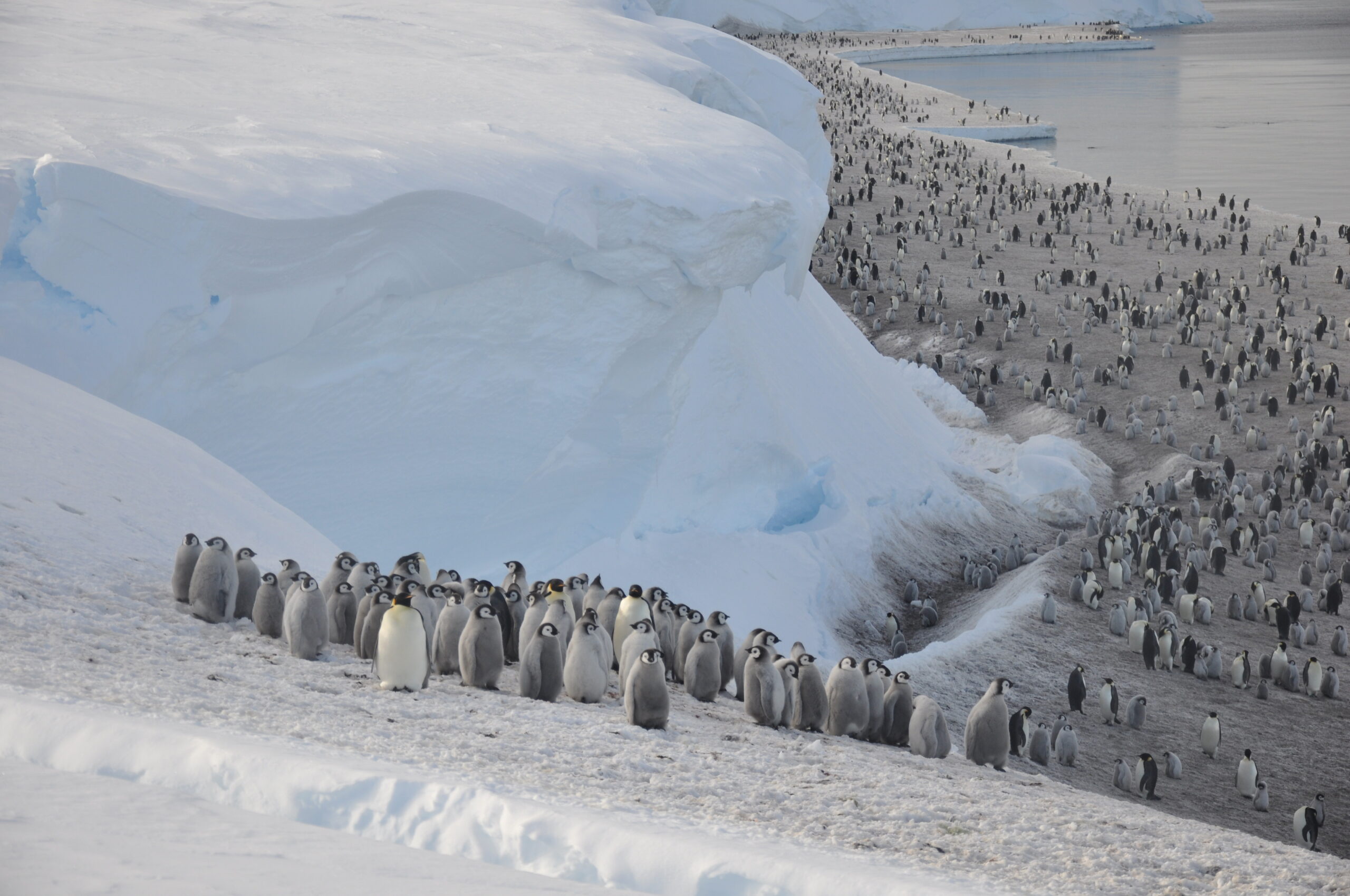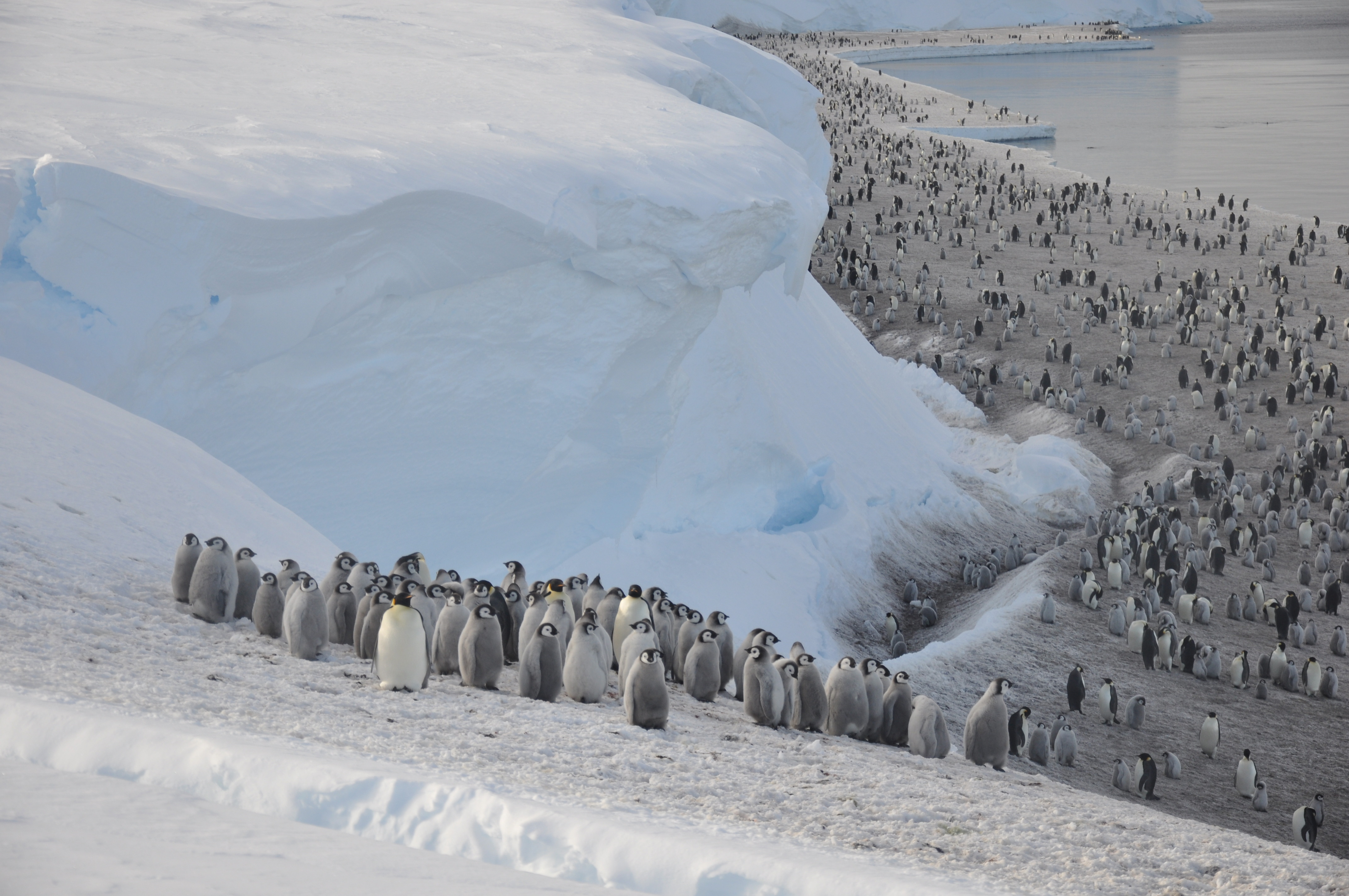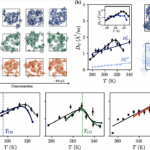Now Reading: Satellite images show a dramatic decline in Antarctica’s emperor penguin population — and it’s happening faster than we thought (photos)
-
01
Satellite images show a dramatic decline in Antarctica’s emperor penguin population — and it’s happening faster than we thought (photos)
Satellite images show a dramatic decline in Antarctica’s emperor penguin population — and it’s happening faster than we thought (photos)

We’re witnessing a march of the penguins — not to the edge of the ice, but to extinction.
According to new research by the British Antarctic Survey (BAS), the population of emperor penguins in western Antarctica is declining faster than our most pessimistic predictions.
Using satellite images to survey colonies across the Antarctic Peninsula, the Weddell Sea and the Bellingshausen Sea, BAS researchers determined that the emperor penguin population in the region decreased by 22% between 2009 and 2024.
By contrast, the previous estimated global population decline, dating to the period between 2009 and 2018, was just 9.5%. The new work suggests that emperor penguins could approach extinction around the year 2100.

Emperor penguins face numerous challenges for breeding success, from changes in weather patterns to increased competition for food to increased levels of predation. And, of course, there’s the issue of climate change. The seabirds are reliant upon Antarctica’s seasonal sea ice for mating and rearing chicks, and in recent years, some areas of that sea ice have become more unstable — and a warming world could be partially to blame.
“The fact that we’re moving to a position faster than the computer models project means there must be other factors we need to understand in addition to loss of breeding habitat,” BAS emeritus fellow Phil Trathan said in a statement.
“The only way we’ll see a turnaround for the population is if we stabilize greenhouse gas emissions. If we don’t, we’ll probably have relatively few emperor penguins left by the turn of this century,” he added.
RELATED STORIES
The slightly optimistic news is that this drastic rate of decline has so far been observed only in one region of Antarctica. But that region is home to 30% of the global emperor penguin population.
“There’s quite a bit of uncertainty in this type of work and what we’ve seen in this new count isn’t necessarily symbolic of the rest of the continent,” said BAS scientist Peter Fretwell. “But if it is — that’s worrying because the decline is worse than the worst-case projections we have for emperors this century.”

BAS will be conducting satellite research across the Antarctic continent to determine the emperors’ global rate of decline — and hopefully they’ll have some better news.
A paper on the research was published Tuesday (June 10) in the journal Nature Communications: Earth & Environment.
Stay Informed With the Latest & Most Important News
Previous Post
Next Post
-
 012024 in Review: Highlights from NASA in Silicon Valley
012024 in Review: Highlights from NASA in Silicon Valley -
 02Panasonic Leica Summilux DG 15mm f/1.7 ASPH review
02Panasonic Leica Summilux DG 15mm f/1.7 ASPH review -
 03From Polymerization-Enabled Folding and Assembly to Chemical Evolution: Key Processes for Emergence of Functional Polymers in the Origin of Life
03From Polymerization-Enabled Folding and Assembly to Chemical Evolution: Key Processes for Emergence of Functional Polymers in the Origin of Life -
 04How New NASA, India Earth Satellite NISAR Will See Earth
04How New NASA, India Earth Satellite NISAR Will See Earth -
 05And Thus Begins A New Year For Life On Earth
05And Thus Begins A New Year For Life On Earth -
 06Astronomy Activation Ambassadors: A New Era
06Astronomy Activation Ambassadors: A New Era -
07SpaceX launch surge helps set new global launch record in 2024




















